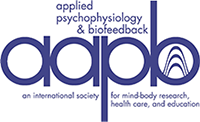Train Wrecks and Other Things to Consider
All practitioners make mistakes, have lapses in clinical judgment, and have outcomes that do not meet prevailing standards. There are several common minefields that have significant potential for causing train wrecks in therapy. These include missed family dynamics, one-size-fits-all treatment, nonclinical databases, clients with chemicalized brains, inattention to the behavioral/emotional dimension of treatment, and clinician's penchant to hide behind blaming the client for failures. Dogmatic adherence to the notion of pre-eminence of neurofeedback as the singular treatment modality to the exclusion of supportive/adjunctive therapies is particularly hazardous to neurotherapeutic treatment brilliance. However, therapeutic brilliance is likewise dependent on the clinician having expertise in these effective synergetic modalities. Some of the author's train wrecks are presented as case examples.

Johnny's ClinicalQ summary. Elevated eyes-closed (EC) theta and alpha slowing pattern suggestive of marijuana use.

RateMD ratings (client 4 is heavily medicated).

Braindriving heavily medicated client.

A child in crisis: ClinicalQ at locations Cz, O1, F3 and F4, and Fz.

Paul G Swingle
Contributor Notes
